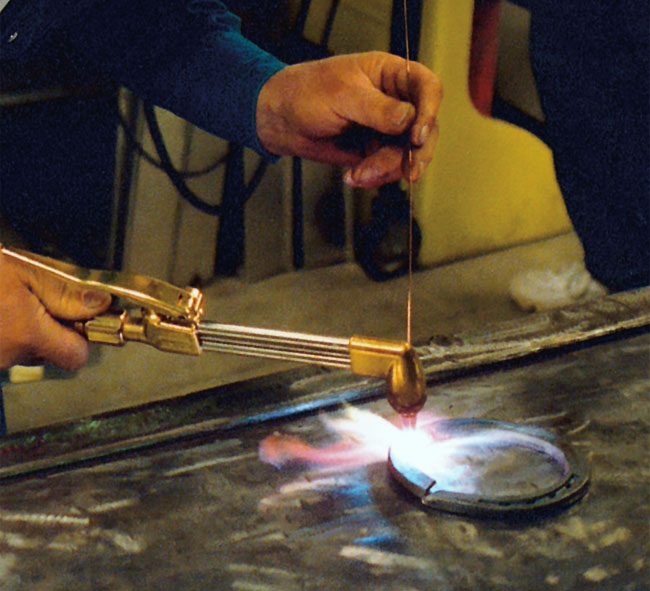American Farriers Journal
American Farriers Journal is the “hands-on” magazine for professional farriers, equine veterinarians and horse care product and service buyers.

TORCH WELDING. A bar shoe is produced using an oxyacetylene torch and a welding rod.
DECISIONS. DECISIONS. When it’s time to weld a horseshoe, farriers have more than one option for getting the job done. And for most shoes, oxyacetylene torch welding and the various types of electric arc welding will all produce a strong weld. The “right” choice depends on the preferences of the farrier, who must weigh the cost, convenience, time and required skills for the numerous welding processes.
The following overview of the advantages and disadvantages of the different welding processes is meant to help farriers decide which method is right for them.
Welding torches are a common sight on shoeing rigs these days, perhaps because of their versatility. The equipment for torch welding — often referred to as oxyacetylene welding because of the oxygen and and acetylene gases used to fuel the flame — also can be used for brazing, cutting and heating.
Oxyacetylene torches are available in different sizes. A light-duty version is likely to meet a farrier’s needs, but medium-duty, which can cut steel up to 4 inches thick, and heavy-duty models, able to cut metal up to 9 inches thick, are available.

THE RIGHT READ. Many welding torches work inefficiently after their users get into the bad habit of not adjusting their oxyacetylene regulators for the task at hand.
Oxyacetylene torches are comparatively inexpensive. A high-quality, light-duty combination torch kit can be purchased for about $200 in most markets, according to…